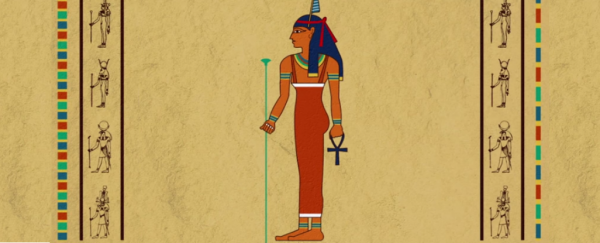This week, the discovery of a tomb in Abu Sir - an extensive necropolis built in the vicinity of Cairo in Egypt - has alerted historians to the existence of a previously unknown pharaonic queen. Believed to have ruled the Kingdom of Egypt with her husband Neferefre, 4,500 years ago, Queen Khentakawess III has been identified by the inscriptions carved into this recently uncovered funerary structure.
For the first time, said Egyptian antiquities minister, Mamdouh al-Damaty, "we have discovered the name of this queen who had been unknown before the discovery of her tomb".
Inscriptions like these are everything to the archaeologists and historians who try tirelessly to piece together the stories and records from our past, so they can figure out where we've come from as humans, and then take an educated guess as to where we're going. And even several thousands of years ago, people knew this would be the case. Ever since we've known how to write things down, we've known how easy it is to copy them and keep them as records. Records that will shape the ideas and opinions of those who will come to read them.
Which is why, 3,500 years ago in Egypt, someone took it upon himself to erase a certain ruler, Queen Hatshepsut, from history. The practice is called damnatio memoriae, meaning "the damnation of memory", and there are known cases spread throughout ancient history, from Rome, Greece and Egypt to the ancient Israelites and the 10th century Norwegians. But in this instance, who wanted the queen forgotten? And why? That's what history teacher Kate Narev tries to figure out in the TED-Ed video above.
The archaeological record shows evidence of a pharaoh giving orders for the name and image of Queen Hatshepsut to be etched out of existence wherever possible, and even went so far as to have her visages smashed into tiny pieces. The fact is, says Narev, being a woman, and a regent - so not the legitimate heir to the throne, but a sort of 'stand-in' - Hatshepsut would not have been the sole ruler of Egypt at the time, under normal circumstances. "Although it was legal for a woman to be a monarch, it disturbed some essential Egyptian beliefs," she says.
Firstly, says Narev, the pharaoh was believed to be the living embodiment of the male god, Horus, so how could a woman possibly play this role? Secondly, the disturbance of the tradition of male rule by a woman was considered to be a disturbance to the Egyptian people's understanding of Maat, which is a word meaning truth, related to order and justice.
Perhaps the pharaoh that came after her saw through all the ways Queen Hatshepsut tried to 'fool' people into thinking she was masculine, for example, by using the masculine version of her name, and sometimes calling herself a different name altogether, Maatkare, in an effort to ease the discomfort surrounding her rule. Perhaps by trying to erase any records of her existence, this pharaoh was trying to reinstate Maat, and make everyone forget that it was ever disturbed.
So who is this mystery smasher of visage, and etcher away of names and records? Watch the video above to find out. It suddenly makes me desperate for George R. R. Martin to hurry up and finish with his tales of Essos and Westeros and all the rest of it and set an epic tale in the world of Hatshepsut.
Source: TED-Ed
